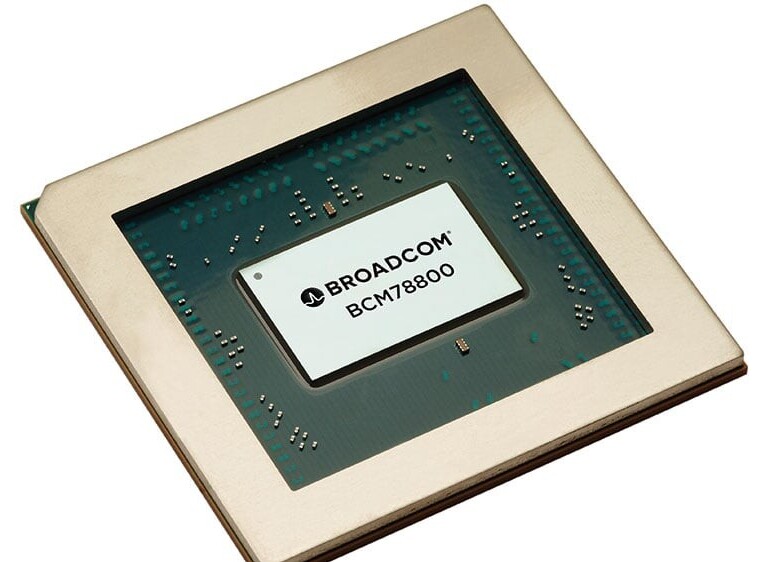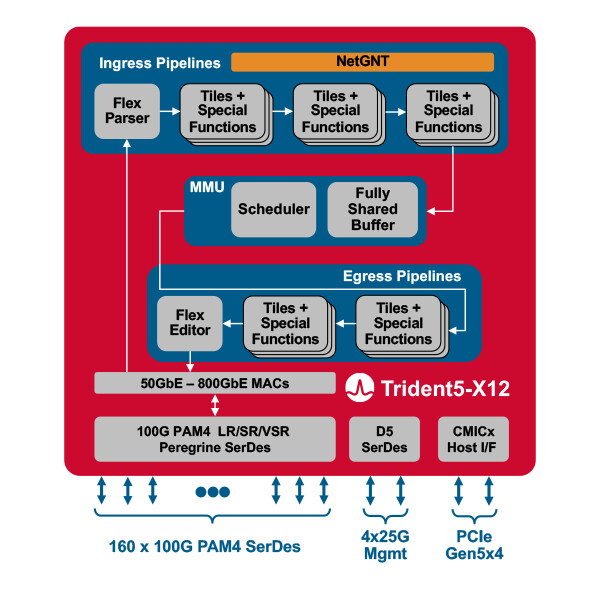Artificial intelligence has been a popular topic this year, with AI processors being integrated into various components such as CPUs, GPUs, NPUs, and more. Now, we are seeing the integration of AI processing elements into networking chips. Today, Broadcom announced its new Ethernet switching silicon called Trident 5-X12. This chip delivers 16 Tb/s of bandwidth, which is double the previous Trident generation, and also supports fast 800G ports for connection to Tomahawk 5 spine switch chips. The Trident 5-X12 is software-upgradable and optimized for dense 1RU top-of-rack designs, allowing for configurations with up to 48x200G downstream server ports and 8x800G upstream fabric ports. The 800G support is achieved using 100G-PAM4 SerDes, enabling up to 4 m DAC and linear optics.
However, the Trident 5-X12 is not just a switch chip. Broadcom has also added AI processing elements in an inference engine called NetGNT (Networking General-purpose Neural-network Traffic-analyzer). This engine can detect common traffic patterns and optimize data movement across the chip. One example provided by the company is its ability to handle AI/ML workloads. In this case, NetGNT performs intelligent traffic analysis to prevent network congestion. It can detect real-time "incast" patterns, where multiple flows converge on the same port simultaneously. By identifying incast early, NetGNT can implement hardware-based congestion control techniques to maintain performance without introducing latency.

